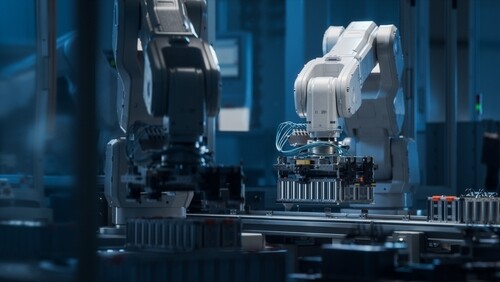Abstract: In July 2023, the government of India identified and updated a list of 30 critical and strategic minerals for the country, including Cobalt and Lithium. Besides identification, the Ministry of Mines, along with the Geological Survey of India (GSI), was tasked with exploring mineral reserves nationwide. The projects for such explorations grew to 122 in 2023-2024 versus just 59 from 2020-2021. Although mineral projects have increased and exploration of such are met with little success, technology to extract and refine them is still missing, which shows a clear gap between exploration and utilisation of the minerals in India. In the past, the government has proactively engaged in efforts such as the Green Hydrogen Mission to reduce its dependence on carbon-based traditional energy sources. To balance the burden of being entirely dependent on the People’s Republic of China (PRC) and the U.S. for critical mineral supply has forced India to diversify its import partners.
Problem statement: Given its significant carbon footprint, how successful are India’s diplomatic efforts to meet critical energy requirements?
So what: As one of the largest emitters of greenhouse gases, the Indian government must reduced its dependence on traditional energy sources. The country’s curiosity about lithium is a result of the element being an alternative to traditional energy sources with almost zero carbon emissions and the capability to combat climate change. With lithium as a source of clean energy, India could replace carbon-based energy sources to meet its ambitious sustainable goals. India has significant lithium reserves of up to 5.9 million tonnes, but infrastructure to refine such is not available, and it could probably take years to furnish. The unavailability of proper exploration technology and diversification of import partners could lead India to cooperate with Argentina, one of the Lithium Triangle nations, to benefit from their experience in the optimum utilisation of lithium.

Lithium, Diplomacy and Cooperation
The speedy depletion of traditional energy sources and associated risks such as global warming and climate change have provoked nations to search for alternatives. The challenge is rigorous, mainly for the Indian subcontinent, as the rising sea level due to global warming would drastically impact the region. Critical minerals like lithium and cobalt are becoming game-changers to reduce the burdens of traditional energy sources and transition to clean energy alternatives. Such minerals are vital to India’s economic growth and sustainable development.[1] Lithium is recyclable with high power density, making it suitable for Electric Vehicles (EV).To develop the EV batteries sector, the Government of India has already initiated the National Program on Advanced Chemistry Cell (ACC) Battery Storage, an initiative under the Make in India program to incentives EV manufacturing companies such as Reliance Limited, Ola Electric, and Hyundai Motors by providing grant over $2 billion.[2] India has been actively exploring lithium reserves as it is among the largest consumers of fossil fuels and emitters of greenhouse gases, including carbon dioxide.[3] Being a strategic mineral, lithium has provided the scope for diplomacy and cooperation with foreign nations.
Critical minerals like lithium and cobalt are becoming game-changers to reduce the burdens of traditional energy sources and transition to clean energy alternatives.
Hunt for Domestic Reserves
In February 2023, the Geological Survey of India (GSI) discovered 5.9 million tonnes[4] of lithium resources in the Salal-Haimana area of the Reasi district in the Union territory of Jammu and Kashmir.[5] This discovery significantly boosted India’s lithium hunt, the country with the seventh-largest lithium reserves in the world.[6]
Motivated by the discovery of large lithium reserves, India ambitiously planned to increase the sale of electric vehicles by 30 per cent in private cars, 80 per cent in two and three-wheeler vehicles, and 70 per cent in commercial vehicles by 2030.[7] However, India currently has no facilities for refining lithium, and the sale of electric vehicles accounts for just around 6.3 per cent of the overall vehicle sales in India by 2023.[8] Traditionally, the Hong Kong Special Administrative Region of the People’s Republic of China (HKSAR), China, and the U.S. have been the major partners in India’s lithium imports.
According to the Press Information Bureau, India imported 26,641 tonnes of lithium from HKSAR (37.32 per cent of its overall lithium import), followed by 22,881 tonnes from the PRC (32.05 per cent) in 2020-21. The U.S. also transferred 155 tonnes of lithium in 2020-21 versus 84 tonnes in 2018-19.[9] For the acquisition and manufacturing of lithium-ion batteries in India, GSI, along with Khanij Bidesh India Limited (KABIL), a consortium of three Public Sector Undertakings (PSUs)-Mineral Exploration & Consultancy Limited (MECL), National Aluminium Company Ltd. (NALCO), and Hindustan Copper Ltd. (HCL), are jointly working on the research and development.[10]
Exploration of lithium reserves would help India manufacture EV batteries to boost its electronic and automobile industries. Lithium is a highly reactive alkali metal. Its lightweight and high energy-storing capability make it suitable for different manufacturing sectors, such as EV batteries, aluminium production, pharmaceutical compounds, ceramics, and the nuclear sector.
For half a decade, GSI has conducted various exploration projects for critical minerals such as lithium, tungsten, molybdenum and other rare earths in various states – Arunachal Pradesh, Jharkhand, Chhattisgarh, Jammu & Kashmir, Bihar, Meghalaya, Nagaland, Ladakh, and Andhra Pradesh.[11] Besides GSI, Atomic Minerals for Directorate for Exploration and Research (AMDER), under the aegis of the Department of Atomic Energy (DAE), has also conducted lithium exploration drives in various districts of Karnataka and Rajasthan. Meanwhile, 1600 tonnes of lithium reserves were discovered in a preliminary survey by the Atomic Minerals Directorates (AMD) for Exploration and Research in the Mandya district of Karnataka. Access to lithium would play a pivotal role in securing India’s transition towards a green economy.[12] Apart from domestic exploration, efforts were also made by several state-owned companies, such as KABIL, to explore lithium mines overseas.
India’s Lithium Diplomacy with Argentina
Argentina is amongst the largest sources and exporters of lithium. Argentina, together with Bolivia and Chile, constitute the lithium triangle, where more than half of the lithium reserves (almost 50-85 per cent)[13] exist in brine. According to the U.S. Geological Survey, Bolivia has $21 million tonnes of lithium reserves, followed by Argentina with $20 million[14] tonnes of reserves.
In recent years, India has taken various steps to reduce its dependency on carbon-emitting energy resources by switching to clean energy options. Besides cutting dependency on traditional fuels, diversification of the lithium import partner and reducing carbon emissions were the other primary motives for India reaching out to Argentina.[15]
The PRC has been the largest provider of India’s critical mineral requirements. Due to strained ties and over-dependence on Beijing, New Delhi looked towards Argentina to source the lithium mineral. According to the U.S. Committee on Foreign Affairs, the PRC invested $16 billion between 2018 and 2020 in overseas mining, including lithium reserves.[16] The PRC is the largest supplier of EV batteries worldwide and has already reached the lithium triangle.[17]
Due to strained ties and over-dependence on Beijing, New Delhi looked towards Argentina to source the lithium mineral.
Recently, on January 15, 2024, India signed an agreement to acquire five lithium blocks in the Catamarca province of Argentina. The deal is signed between Catamarca Minera Y Energetica Sociedad Del Estado (CAMYEN SE), a state-owned mining company for energy exploration in Catamarca, and KABIL, a state-owned joint venture established for exploring lithium and cobalt mines outside India.[18] The Governor of Catamarca attended the agreement signing event, officials from the Mining Ministry, and India’s Ambassador to Argentina Dinesh Bhatia.
Speaking on the occasion, India’s Union Minister for Coal and Mines, Pralhad Joshi, who virtually attended the event, said “This is a historic day for both India and Argentina as we are scripting a new chapter in bilateral ties with the Agreement signing between Khanij Bidesh India Limited (KABIL) and CAMYEN – a step which will not only play a crucial role in driving the energy transition for sustainable future but also ensure a resilient and diversified supply chain for critical and strategic minerals essential for various industries in India”.[19]
With this agreement, India will invest Rs 200 crore ($24 million) for five years for joint exploration and development of five Brine-type lithium blocks – Cortadera-I, Cortadera-VII, Cortadera-VIII, Cateo-2022-01810132, and Cortadera-VI – at Catamarca province covering an area of 15,703 hectares. KABIL is tasked with locating overseas mines while exploring, developing, and supplying critical minerals to India.[20] Ensuring lithium sourcing for India, KABIL bagged the rights for the exploration and extraction of lithium on five blocks for commercial production. Earlier, India had been negotiating with Argentina and Bolivia for months to finalise a lithium pact. A non-binding Memorandum of Understanding was also signed between KABIL and three state-owned Argentinian firms- CAMYEN, YPF, and JEMSE.
Mining Legislation
In August 2023, the Indian Parliament brought the Mines and Minerals (Development and Regulation) (MMDR) Amendment Act Bill 2023, seeking several amendments to the MMDR Act of 1957. The bill identified six minerals, including lithium, as ‘critical and strategic’ and indicated that it would boost the private sector’s involvement in exploring the country’s untapped energy minerals, which were previously reserved under government-owned firms. Aiming to ensure clean energy technology and secure a smooth critical mineral supply chain, the bill enables collaboration and partnership between private and public entities to explore the essential and deep-seated minerals in India. Earlier, the MMDR Act of 1957 allowed private sector participation via the First Come, First Serve (FCFS) mechanism and the auction-based allocation, which government enterprises dominated.[21]
The worldwide demand for lithium and cobalt minerals is predicted to increase by 500 per cent in 2050. The global market of EVs is also projected to touch $823.75 billion by 2030[22] with a compound annual Growth Rate (CAGR) of 18.2 per cent between 2021 and 2030.[23] During the 2023 Union Budget, the government allocated $631 million towards the Faster Adoption and Manufacturing of Electric Vehicle (FAME) scheme to subsidise domestic manufacturing while promoting electric vehicles.[24]
The worldwide demand for lithium and cobalt minerals is predicted to increase by 500 per cent in 2050.
India, along with the U.S. and Vietnam, are the top three importers of lithium-ion and lithium products. During FY 2020-2021, India imported $723 million[25] worth of lithium from HKSAR and the PRC. Additionally, in 2022, India imported 617 million units of lithium-ion batteries from the PRC, Japan, and South Korea, totalling $1.8 billion. India has also set an ambitious target to achieve net-zero emissions by 2070.[26]
Relatively Clean Energy Option
Lithium has provided the opportunity to combat climate change and transition to relatively clean energy options. Although exploration of large reserves in Jammu & Kashmir and Karnataka put India amongst the nations with the largest lithium reserves, refining of lithium will continue to be a major challenge for New Delhi in the coming years. Lithium’s role as a sweetening agent in the India-Argentina relationship is undeniable. However, India must initiate such efforts with other nations as a diplomatic means to cut its dependency on traditional partners such as the PRC and U.S.
Motivated by the progress in mineral exploration, India has set various targets to cut carbon emissions by adopting clean energy technology. Emphasis has also been placed on cooperating and exploring overseas mines, such as the lithium triangle, while reducing the over-dependency on traditional partners. India is completely dependent on foreign countries for lithium supply and spending millions of dollars on raw lithium, and its products, such as EV batteries and electric vehicles. India plans to manufacture 6.8 million electric vehicles by 2030, which will be 30 per cent of the market share, against 6.3 per cent by 2023. Moreover, India has also permitted Foreign Direct Investment (FDI) up to 100 per cent under the automatic route for manufacturing electric batteries. Promoting India as a hub of foreign investment in the electric vehicle industry is expected to increase its share in the projected global electric vehicle market of $823.75 billion by 2030.
India plans to manufacture 6.8 million electric vehicles by 2030, which will be 30 per cent of the market share, against 6.3 per cent by 2023.
The joint collaboration between KABIL and foreign companies would help India gain experience exploring and utilising the domestic lithium reserves. India’s climate change commitments and zero-emission goals by 2070 would promote research and development in lithium technology and manufacturing EV batteries and carbon-free vehicles in India. India needs to establish more companies besides KABIL to simultaneously extend its lithium diplomacy with other nations to meet the ambitious targets. Although the current status of lithium exploration and refining technologies is not satisfactory, collaboration with Argentina and other partners would help India meet its domestic demands for lithium and its products. Given its massive market opportunities in India and worldwide, lithium could play a significant role in India’s economy.
Mukesh Kumar is a doctoral scholar at the Centre for International Politics, Organisations, and Disarmament (CIPOD), Jawaharlal Nehru University (JNU). His research interests include Arms Trade and Economy, Arms Control and Disarmament, AI and critical technology. The ex-intern at the Manohar Parrikar Institute for Defence Studies and Analyses (MP-IDSA) also authored pieces published by the Ministry of Defence, Journal of Defence Studies, and South Asian Voices. The views contained in this article are the author’s alone.
[1] “India’s Lithium Industry: Potentials and Pitfalls,” Observer Research Foundation, August 10, 2023, https://www.orfonline.org/research/indias-lithium-industry-potentials-and-pitfalls.
[2] Idem.
[3] “Geological Survey of India Has Been Digging for Lithium for Last 5 Years,” Business Insider, last accessed March 15, 2024, https://www.businessinsider.in/india/news/geological-survey-of-india-has-been-digging-for-lithium-for-last-5-years/articleshow/98244959.cms.
[4] Hendrix, Cullen S, “India’s Lithium Discovery Could Boost Green Energy but Creates Problems in the Region,” Peterson Institute for International Economics, February 16, 2023, https://www.piie.com/blogs/realtime-economics/indias-lithium-discovery-could-boost-green-energy-creates-problems-region.
[5] ANI, “India to Auction Lithium Reserves Found in Jammu and Kashmir by December: Mines Secretary,” The Hindu, May 02, 2023, sec. India, https://www.thehindu.com/news/national/india-to-auction-lithium-reserves-found-in-jammu-and-kashmir-by-december-mines-secretary/article66802920.ece.
[6] “GSI Discovery Makes India 7th Largest Lithium Resource-Rich Country,” The Times of India, February 10, 2023, https://timesofindia.indiatimes.com/india/gsi-discovery-makes-india-7th-largest-lithium-resource/articleshow/97807112.cms.
[7] Mihir Mishra, “Centre Likely to Auction Lithium Reserves by June,” mint, February 21, 2023, https://www.livemint.com/news/india/centre-likely-to-auction-lithium-reserves-by-jun-11677001406935.html.
[8] Statista Daily Data, “Infographic: How Many EVs Are Sold in India?,” January 03, 2024, https://www.statista.com/chart/31486/electric-vehicle-sales-in-india-by-year-and-type.
[9] “Lithium Import And Production,” last accessed March 14, 2024, https://pib.gov.in/Pressreleaseshare.aspx?PRID=1807681.
[10] “KABIL Set up to Ensure Supply of Critical Minerals,” last accessed March 09, 2024, https://pib.gov.in/pib.gov.in/Pressreleaseshare.aspx?PRID=1581058.
[11] “Lithium Deposits Found – GSI to Carry out More Exploration in J&K,” last accessed March 10, 2024, https://pib.gov.in/pib.gov.in/Pressreleaseshare.aspx?PRID=1907239.
[12] “Preliminary Survey Shows Deposits of Lithium in Mandya District of Karnataka,” last accessed March 10, 2024, https://pib.gov.in/pib.gov.in/Pressreleaseshare.aspx?PRID=1694796.
[13] Vera, M.L., Torres, W.R., Galli, C.I. et al., ”Environmental impact of direct lithium extraction from brines,” Nat Rev Earth Environ 4, 149–165 (2023), https://doi.org/10.1038/s43017-022-00387-5.
[14] “GSI Discovery Makes India 7th Largest Lithium Resource-Rich Country,” The Times of India, February 10, 2023, https://timesofindia.indiatimes.com/india/gsi-discovery-makes-india-7th-largest-lithium-resource/articleshow/97807112.cms.
[15] Moneycontrol, “Explainer: Why India’s Lithium Deal with Argentina Is Important to Reduce Dependence on China,” January 16, 2024, https://www.moneycontrol.com/news/business/explainer-why-indias-lithium-deal-with-argentina-is-important-12059751.html.
[16] Committee on Foreign Affairs, “China Regional Snapshot: South America,” last accessed March 15, 2024, https://foreignaffairs.house.gov/china-regional-snapshot-south-america/.
[17] Jeffrey Cimmino, “Beijing’s Influence on Latin America’s Energy Mix Is Growing—Especially in Renewables,” Atlantic Council (blog), February 12, 2024, https://www.atlanticcouncil.org/in-depth-research-reports/issue-brief/beijings-influence-on-latin-americas-energy-mix-is-growing-especially-in-renewables/.
[18] “India Signs Agreement for Lithium Exploration & Mining Project in Argentina,” last accessed March 05, 2024, https://pib.gov.in/pib.gov.in/Pressreleaseshare.aspx?PRID=1996380.
[19] Idem.
[20] Idem.
[21] “Parliament Passes Mines and Minerals (Development & Regulation) Amendment Bill, 2023,” last accessed March 15, 2024, https://pib.gov.in/pib.gov.in/Pressreleaseshare.aspx?PRID=1945102.
[22] “India’s Strategic Lithium Reserves and the Future of Clean Energy,” last accessed March 14, 2024, https://www.investindia.gov.in/team-india-blogs/indias-strategic-lithium-reserves-and-future-clean-energy.
[23] Idem.
[24] Idem.
[25] Nikhil Guvvadi , “Energy Transition and the Lithium Rush,” Indian Council of World Affairs Sapru House, New Delhi, January 2024, https://www.icwa.in/show_content.php?lang=1&level=1&ls_id=10457&lid=6669#:~:text=India%20in%20the%20Value%20Chain&text=It%20is%20the%20world’s%20largest,importers%20of%20lithium%2Dion%20batteries.
[26] “Lithium Import And Production,” last accessed March 07, 2024, https://pib.gov.in/Pressreleaseshare.aspx?PRID=1807681.





